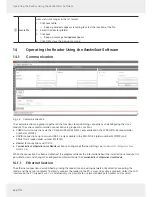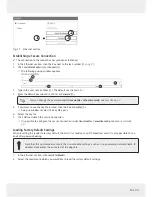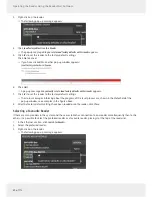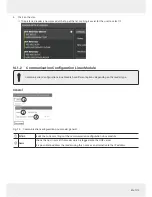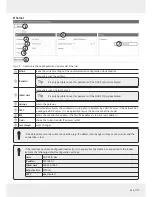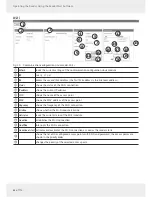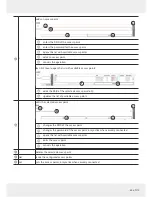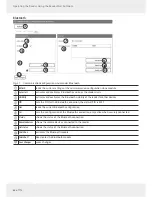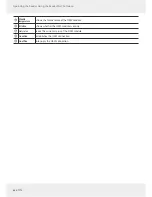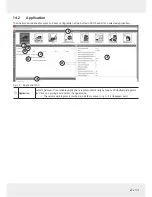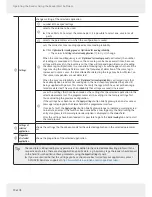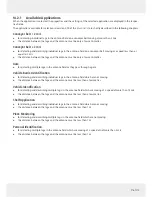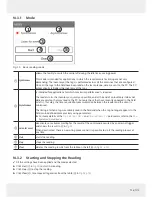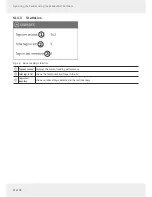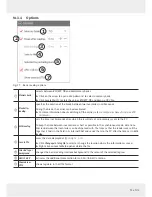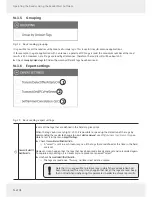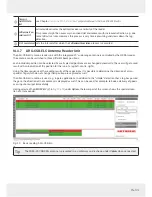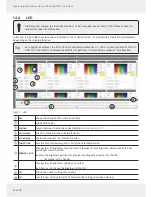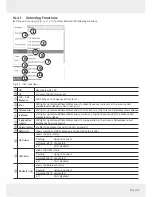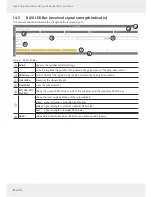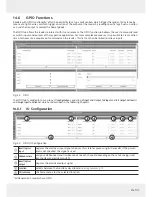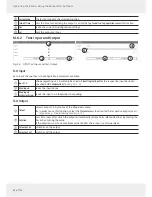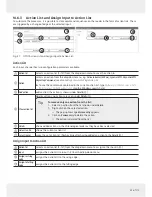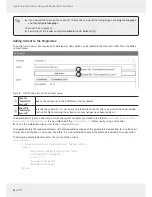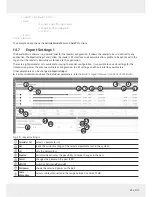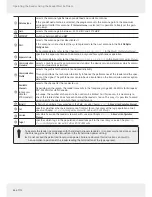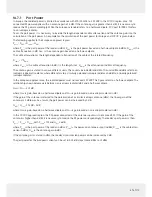
72 of 112
Operating the Reader Using the ReaderStart Software
14.3
Basic Reading
This tab is divided into two parts, the left part contains a table with information about the read tags (
Ⓐ
in the figur
e
below), the right part (
Ⓑ
) shows the statistics as well as options to control the reading process, described in the chap-
ters to follow.
The appearance and disappear
ance of a tag is shown in colour for better visual effect. When a tag appears in the fiel
d,
the row is represented by the green tag information, when it disappears, the row is red.
A
2
3
1
4
5
6
7
8
9
10 11
B
Fig. 34: Basic reading
①
EPC length
indicates the length in bits of the EPC; valid lengths 0–496
②
EPC
EPC of the tag in the hexadecimal representation
③
Port
antenna port at which the tag is read; valid values 1–4
④
RSSI
unitless (shown as having no units) signal strength of the tag response
⑤
RSSI DBM
shows the RSSI value in dBm
⑥
Reads
shows how many times this tag has been read successfully
⑦
Cycles
indicates how often an inventory has been started
⑧
First read
timestamp of the first tag r
eading
⑨
Last read
timestamp of the last tag reading
⑩
Frequency
shows the used transmission frequency
⑪
Tag phase
shows the tag phase in form of a rotating pointer
This parameter is used to distinguish between stationary and moving transponders.
If the transponder is moving away from the antenna, the pointer rotates counterclockwise, and
clockwise, if the transponder is moving towards the antenna.
The movement speed is directly proportional to the rotational speed of the pointer.
In a full rotation of 360°, the transponder tr
avels a distance of 17 cm.
Note that the reader has to change the transmission frequency every 4 seconds,
causing a phase jump.
The tag phase is also shown in the TagScan monitor; see
T
agScan, p. 103

